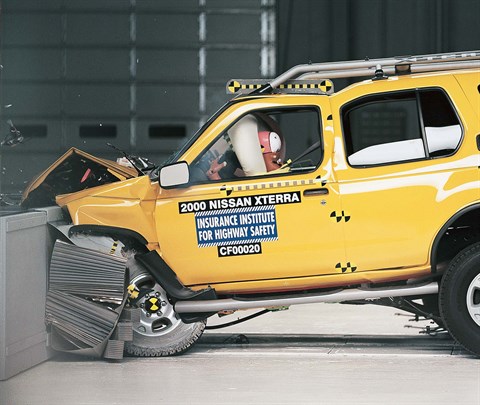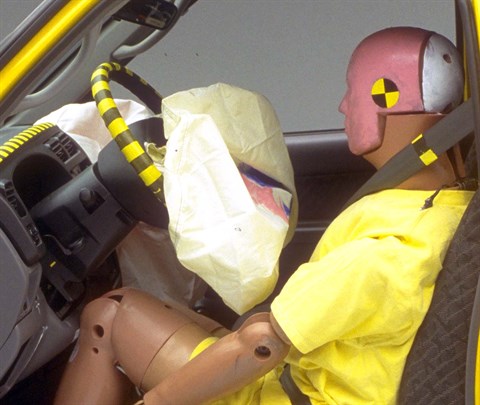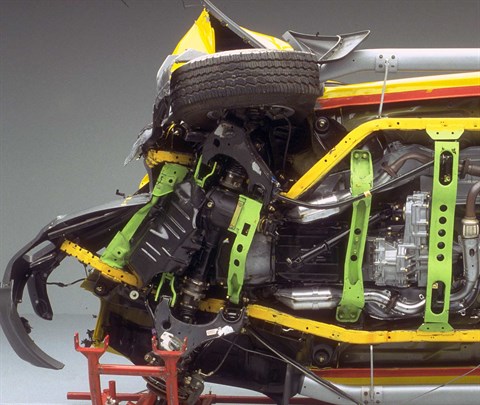Moderate overlap front: original test
Rating applies to 2000-04 models built after September 1999
Tested vehicle: 2000 Nissan Xterra XE 4-door 4wd
The Nissan Xterra was introduced in the 2000 model year. All 2000 and later Xterra models manufactured after September 1999 include structural changes to improve occupant protection in frontal crashes (note: information about when a specific vehicle was manufactured is on the certification label typically affixed to the car on or near the driver door).
The Insurance Institute for Highway Safety has evaluated the crashworthiness of a 2000 Xterra with the structural changes in a 40 mph frontal offset crash test into a deformable barrier.
| Evaluation criteria | Rating |
|---|---|
| Overall evaluation | |
| Structure and safety cage | |
| Driver injury measures | |
| Head/neck | |
| Chest | |
| Leg/foot, left | |
| Leg/foot, right | |
| Driver restraints and dummy kinematics Dummy movement was reasonably well controlled. During rebound, the dummy's head hit the B-pillar. There was far too much upward movement of the steering wheel. | |

Action shot taken during the frontal offset crash test.

The dummy's position in relation to the steering wheel and instrument panel after the crash test indicates the driver's survival space was maintained well except for far too much upward movement of the steering wheel.

The steering wheel moved upward far too much, which contributed to the dummy's head bottoming out the airbag and hitting the steering wheel.

A strong safety cage helped keep the tire from buckling the sill beneath the driver door, maintaining the integrity of the occupant compartment. Crumpled structure in front of the occupant compartment indicates where the crash energy was absorbed.
